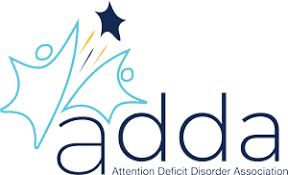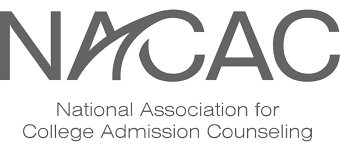Mental wellness is an important part of staying healthy for anyone, but certain factors can contribute to some people struggling with their mental health more than others. Many college students struggle with mental health because of the stress and overwhelm of both school itself and the process of entering adulthood. Members of the LGBTQIA+ community of any age also often struggle with their mental health due to prejudices and discrimination they experience in their lives, so it is very common for LGBTQIA+ college students to face challenges with their mental health. Having both a routine of mental wellness practices and addressing any particular mental health issues that arise are important parts of caring for one’s health, but stigma and lack of inclusive resources can make them challenging for LGBTQIA+ students.
Mental Wellness Practices:
Stress, anxiety, and overwhelm are a part of every person’s life to some degree, and having an ongoing routine of mental wellness practices is the best way to make sure they don’t have a negative impact on health. These practices can be anything from having a set time each day to internally reflect, to doing relaxing activities, to having a support system they talk with about any challenges they are experiencing.
Many colleges offer mental wellness resources for students. What each school offers varies, but can include things like information to help students better understand their mental health, on-staff counselors that students can set up appointments with, quiet spaces on campus, free meditation or relaxation groups, and mental health-focused events or activities throughout the year. To find out what mental health resources a college offers, contact the school’s health center or campus living department.
There are also many online resources and books helping individuals learn about mental wellness and form healthy habits and practices to support their mental health. Some of these resources are wonderful, but unfortunately, there are two issues with the advice many offer that may make them less helpful for members of the LGBTQIA+ community.
One common issue with mental wellness resources is that they give cookie-cutter advice that does not account for the fact that just because a practice can help some people doesn’t mean it will be helpful or realistic for everyone. A common feature of this cookie-cutter approach that can be a barrier for LGBTQIA+ individuals, in particular, is that it often separates advice and information into being ‘for men’ or ‘for women’. This division both assumes that all people are either men or women and that all men or women conform to common gender norms, neither of which is true. Seeing a website or book that splits their advice into gendered sections and puts ‘light a candle and take a bubble bath’ into the list of suggestions for women but not in their list of suggestions for men can make gender nonconforming and trans people feel uncomfortable or othered. While seeing this once may seem like a small disappointment or inconvenience, seeing it over and over again can feel invalidating and hurtful. There are inclusive resources that are specifically made to help members of the LGBTQIA+ community with their mental wellness that may be more helpful and validating for LGBTQIA+ people than more general articles and advice. A great place to start is by looking at LGBTQ+ Wellness’s online self-care guide at https://lgbtqwellness.co/mental-health/self-care/. The second issue many of these resources have is they will not address the fact that challenges with mental health are often rooted in what someone is dealing with in their life, the best tools to help cope with those feelings may vary a lot depending on what the problem is. For example, if a trans student is feeling low because they were misgendered by a classmate, then they will probably gain more from spending time talking to people they trust in an environment where they feel validated and safe than trying to do something they find relaxing but that puts them in an environment where they might be misgendered again. For LGBTQIA+ people, finding a community (online or in person) where they feel safe and comfortable expressing themselves can be a vital part of mental wellness. Local pride centers and LGBTQIA+ organizations at colleges can be spaces where LGBTQIA+ students know they are surrounded by people who relate to their experiences, and online communities and support groups can be a way to have a safe space no matter where they are.
Mental Illness:
Mental illness remains a highly stigmatized topic in our society, and that stigma along with misinformation and ignorance about the topic can make it hard for individuals to get the help they need when they are struggling. Dealing with mental illness is nothing to be ashamed of, and mental illness is far more common than many people realize. According to the National Alliance on Mental Illness (NAMI) each year in the US 1 in 5 adults experience mental illness and 1 in 6 youth aged 6-17 experience a mental health disorder1. Suicide is the second leading cause of death among people aged 10 to 24 and due to the bigotry and mistreatment they face, LGBTQIA+ youth are 4 times as likely as their peers to attempt suicide2.
For LGBTQIA+ students who are struggling with their mental health, it can be helpful to find a therapist they can talk to on an ongoing basis. Some colleges have therapists or counselors on staff that students can meet with, and if a student is looking to find a mental health professional outside of their school, there are directories both online and at some pride centers that were created to help connect LGBTQIA+ people with mental health professionals who have experience specifically working with LGBTQIA+ patients and/or are members of the community themselves.
The Trevor Project (https://www.thetrevorproject.org/) is a fantastic resource for LGBTQIA+ youth who are struggling with their mental health. They have written information on their site as well as a call, text, or online chat where LGBTQIA+ youth ages 13-24 can talk to trained counselors if they are feeling depressed, suicidal, or even just need someone to listen. In the case of a mental health emergency, it is always best to call 911 as quickly as possible.
Mental health may be complicated at times, but there are great resources available and people who work hard to make sure that LGBTQIA+ students have the support they need. By following a good ongoing mental wellness routine and getting help for any challenges they are dealing with, LGBTQIA+ students can stay healthy and safe so they can focus on the best parts of college- learning about subjects they are passionate about, meeting new people and having new experiences, and becoming their amazing adult selves.
__________________________________________________________________________________________
Each month I am sharing information and advice for a different aspect of college life for LGBTQIA+ students! Next month I will be sharing information for transgender/nonbinary students about the steps for changing their name and gender marker both legally and on official school records.
__________________________________________________________________________________________
Citations:
1 “Mental Health by the Numbers.” NAMI, https://www.nami.org/mhstats.
2 “Facts about LGBTQ Youth Suicide.” The Trevor Project, 25 Oct. 2022,
https://www.thetrevorproject.org/resources/article/facts-about-lgbtq-youth-suicide/.








